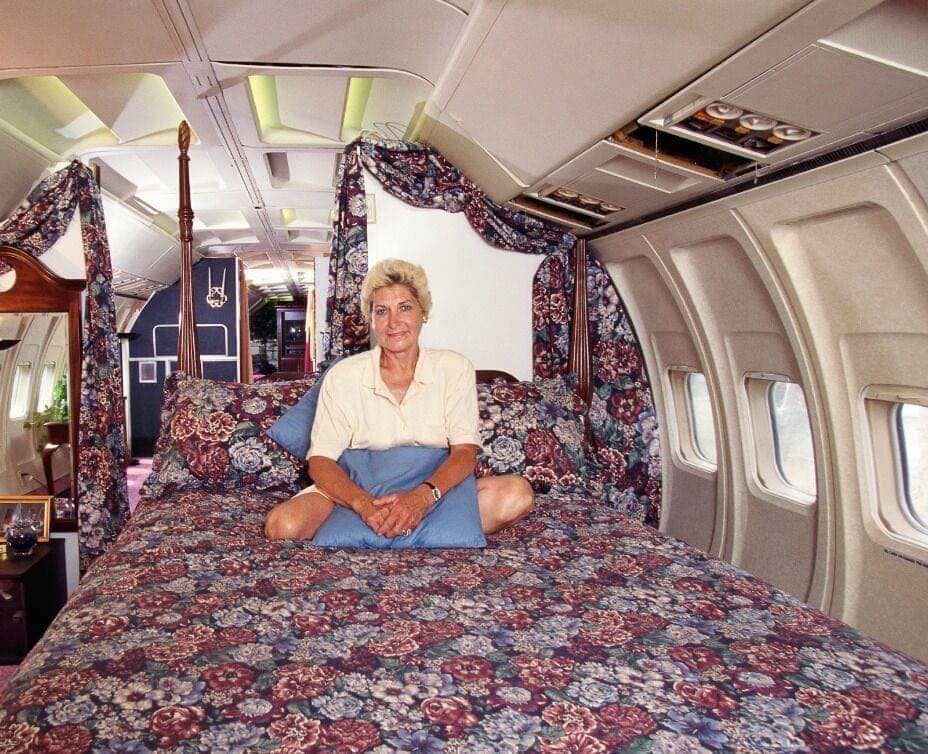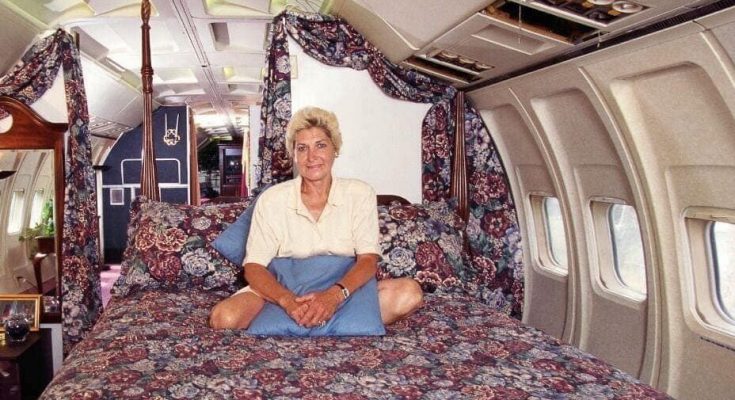The practice of utilizing non-traditional materials such as buses, tiny houses, and shipping containers for residential construction has been increasingly embraced.

These distinctive and cost-effective options provide an equivalent degree of comfort along with various customization possibilities. Nevertheless, Jo Ann Ussery was a pioneer of this trend well before it gained popularity.
In 1993, following the destruction of her residence in Benoit, Mississippi, she undertook an extraordinary journey, converting an aging Boeing 727 into a remarkable and fully operational dwelling.
From Tragedy to Triumph
Ussery’s path commenced following the unexpected death of her husband, which left her and her two children in search of a new residence. Faced with financial difficulties, she first considered purchasing a trailer as a viable option.
Nevertheless, she quickly came to the understanding that she was unable to purchase a residence sufficiently spacious to support her expanding family. At that point, Bob, Ussery’s brother-in-law and an air traffic controller, proposed an unconventional solution: residing on an aircraft.
Captivated by the idea, Ussery visited a dismantled Boeing 727 and experienced an immediate affection for it. Remarkably, the aircraft was priced at just $2,000, which included shipping costs. Motivated by the knowledge that Donald Trump possessed a private Boeing 727 as well, Ussery decided to name his new purchase “Little Trump.”
Driven by resolve and innovation, Ussery undertook the considerable challenge of converting the aircraft into a distinctive and cozy residence. For an investment of under $30,000 (which is roughly equivalent to $60,000 today), she initiated a venture that would demand considerable time and financial resources.
Maintaining the stability of the aircraft throughout the renovation process was essential; therefore, she deliberately positioned it on her property, orienting the nose towards a scenic lake. The tail was securely anchored with concrete to ensure it remained stationary.
Having established the groundwork, Ussery enthusiastically commenced the process of deconstructing the interior, which covered an impressive area of 1,500 square feet. Featuring 76 windows, the nearly 138-foot-long aircraft provided a generous influx of natural light.
In order to realize her vision, Ussery implemented significant changes to the design of the aircraft. Although the original windows were not operational, the current air conditioning system provided a comfortable living atmosphere.
She focused on enhancing insulation and implemented new flooring across the entire aircraft. Furthermore, Ussery creatively transformed the plane’s bathroom and overhead compartments into efficient space-saving features. The outcome was a remarkably designed living area that optimized the use of the available space.
A Unique Oasis of Comfort
Following the completion of the extensive renovations, Ussery focused on creating an exceptional and inviting living space. The refurbished aircraft now featured three bedrooms, a warm living area, a fully equipped kitchen, and a practical laundry room.
Ussery, seeking to exceed mere fundamentals, enhanced her redesigned jet with surprising amenities such as a phone and an oven. Nevertheless, the most remarkable feature of her design was the remarkable conversion of the cockpit into an exquisite master bathroom.
Ussery skillfully incorporated a soaking tub to capitalize on the breathtaking views beyond. The room’s design was carefully orchestrated to create the sensation for anyone entering that they were suspended above the water.
What distinguishes Ussery’s accomplishment is that she undertook this remarkable transformation entirely on her own. Between 1995 and 1999, she and her children resided in their modified aircraft, reveling in the pleasures of their distinctive home.
The experience proved to be immensely rewarding, leading Ussery to ultimately choose to present her creation to the public by transforming it into a museum. Unfortunately, while relocating the airplane a brief distance, an accident transpired, resulting in it slipping from the carriage and breaking apart.
Although Ussery’s Boeing 727 is no longer in flight, its legacy remains a source of fascination and inspiration. Her remarkable endeavor of transforming an obsolete aircraft into a remarkable residence demonstrates that with vision, creativity, and perseverance, it is possible to craft a living environment that is genuinely unique.
Jo Ann Ussery’s story serves as a testament to the limitless possibilities that exist when we dare to think outside the box and transform our dreams into reality.
